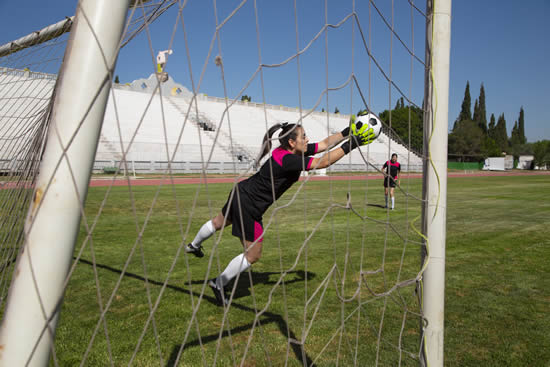The evolution of goalkeeper gloves in soccer is a remarkable journey, from simple protective measures to highly advanced technical equipment. Both the protection and performance of goalkeepers have significantly improved over the decades.
The materials and features have evolved dramatically over the years to meet the demands of the modern game of soccer.
Development, Material, and Features of Goalkeeper Gloves
Early Development: The Beginnings of Goalkeeper Gloves
In the late 19th and early 20th centuries, during the early days of soccer, there were no specialized goalkeeper gloves. Goalkeepers often played without gloves or used regular winter gloves to protect their hands from the cold.
In the 1950s, there were initial attempts to create specialized goalkeeper gloves, though these were primarily meant to protect hands from bad weather, offering little to no grip or padding.
1960s and 1970s: The First Specialized Gloves
The 1960s saw the beginning of manufacturing gloves specifically designed for goalkeepers. These gloves were often made of simple fabric or leather, featuring light padding.
The introduction of latex in the 1970s fundamentally changed the landscape of goalkeeper gloves. By using latex as a coating material for the palm, better grip was achieved in both wet and dry conditions. The material also provided greater flexibility, allowing goalkeepers to catch and control the ball more effectively.
1980s and 1990s: Professionalization and Innovation
In the 1980s, the trend towards more heavily padded gloves gained momentum. This padding served both to protect the hands and to assist in catching the ball, which was particularly important when dealing with high-speed shots.
Silicone inserts and various types of foam were used to provide more cushioning and better grip. Different types of foam were developed, such as harder foam for more durability and softer foam for improved grip.
Also in the 1980s, wrist straps were introduced to enhance wrist stability while ensuring the gloves could be worn securely. This adjustment was necessary to provide a better fit and give goalkeepers greater control over their movements.

2000s to Today: High Technology and Customization
Modern goalkeeper gloves are made from a combination of synthetic materials, neoprene, and high-quality latex, designed to offer a perfect balance between grip, flexibility, and protection.
Various types of latex are available depending on match conditions. There is special latex for wet conditions ("Aqua Latex") as well as latex for games on artificial turf or hard surfaces, which is particularly abrasion-resistant. Modern latex materials provide extremely high grip, but they can also be delicate and require special care.
Gloves come in different cut types, such as roll finger, negative cut, or flat cut, each offering distinct benefits in terms of fit and control. The negative cut, for instance, is often used by professionals because it offers a tighter fit, leading to a more direct ball feel.
In the early 2000s, the addition of "Finger Save" systems emerged. These flexible reinforcements in the finger area are designed to prevent fingers from being hyperextended, helping to prevent injuries—especially important for goalkeepers who face powerful shots regularly.
Modern goalkeeper gloves are designed to be lightweight and flexible while maintaining protective features. Neoprene and mesh materials help make the gloves breathable and reduce weight, which enhances mobility and comfort for the goalkeeper.
Conclusion: The Features of Modern Goalkeeper Gloves
- Grip: A crucial feature, ensured by the use of special latex layers. High-quality latex provides maximum grip in both dry and wet conditions but often requires intensive care.
- Cushioning: Additional cushioning helps reduce the impact force of opposing shots, enhancing both comfort and safety for the goalkeeper.
- Fit and Flexibility: Different cuts and adjustable closure systems offer a customized fit, enabling a direct ball feel. The gloves are designed to fit snugly while providing enough freedom of movement for quick reactions.
- Protection Systems: Besides finger protection elements, some models also offer additional protection on the palms or back of the hand to prevent injuries. This protection is designed to be integrated unobtrusively without sacrificing mobility.
Development and Importance
Goalkeeper gloves are now an essential part of the gear and have undergone a tremendous evolution—from simple leather gloves without special features to highly advanced tools that provide numerous advantages for the goalkeeper. They are tailored to the demands of the game, which has continuously evolved in its dynamics, and they have significantly contributed to improving the performance of goalkeepers. Today's technology focuses not only on maximum protection but also on grip, flexibility, and optimal ball feel, which plays an essential role in the modern world of soccer.